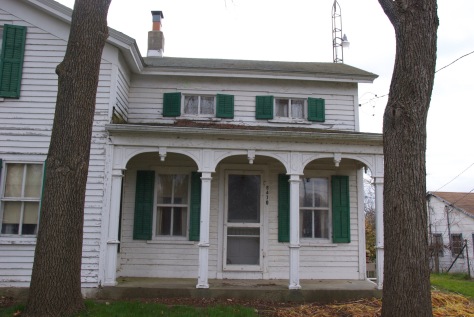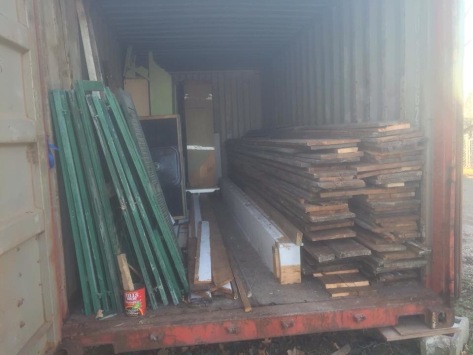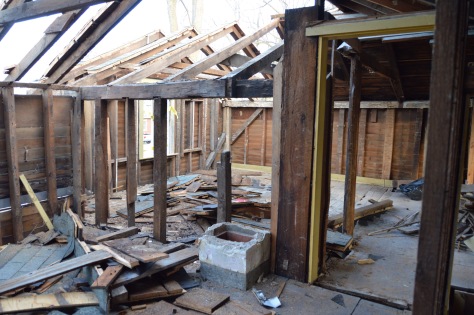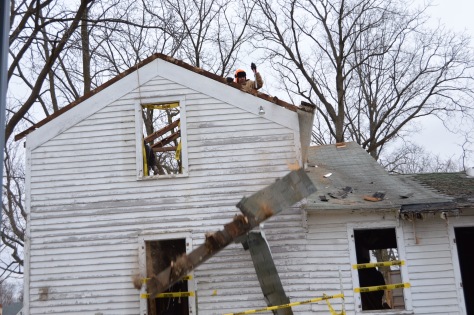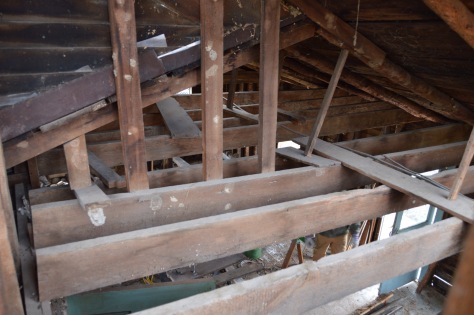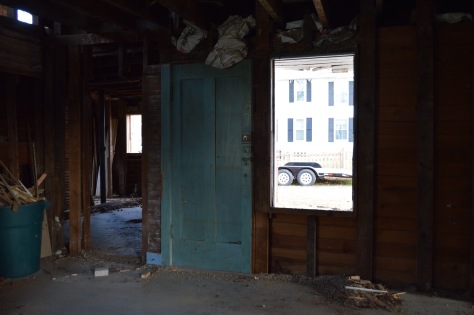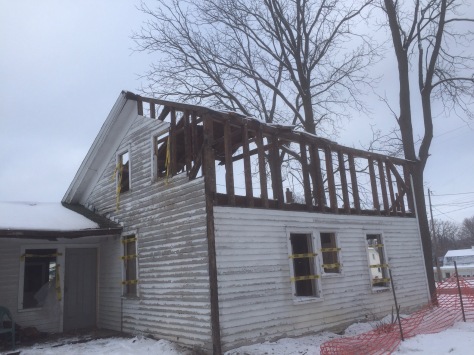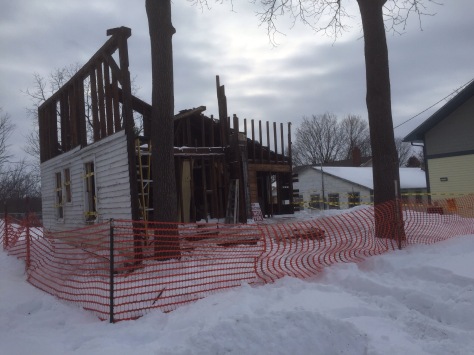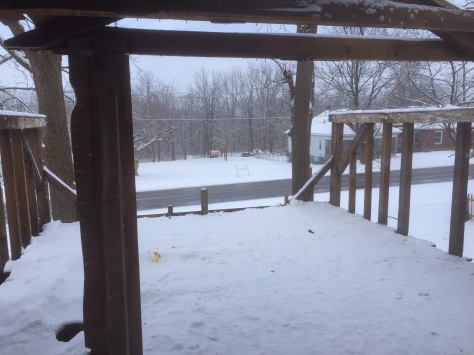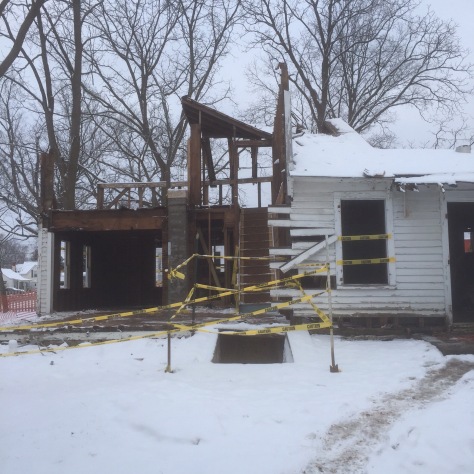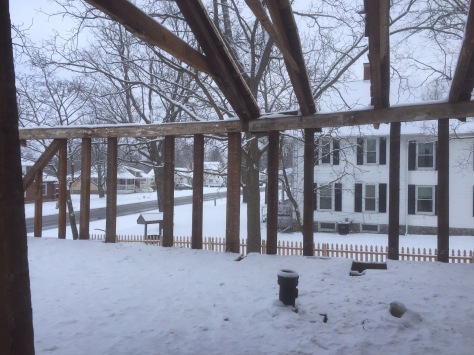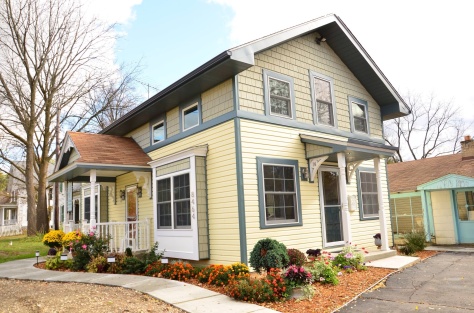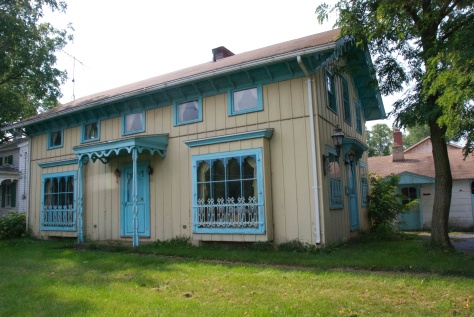We haven’t given up on the dream of artists’ studios and creative places to play. As a matter of fact, for the two years, we’ve been hard at work on extending that dream to include a “house for aging artists” which sits on the site of the former farmhouse. Unfortunately, due to some serious concerns over workmanship by the original general contractor and his framing crew, we ran headlong into legal issues which slowed our progress on the ostensibly two-family house for more than 14 months. Since resolving the legal issues last winter, we have been working very carefully to make the necessary repairs, and complete the project to the standards upon which our legacy dictates. In other words, craftsmanship counts here.
Why call it a two-family house? Really, it is not. But it is. The house was designed with a full apartment on the lower level walk-out to be the home of my parents, both artists and musicians, who would be moving up to Michigan from Florida. My mother, Consuelo, who was the true matriarchal incredibly talented fine artist and vocalist, passed away only a few short weeks after their arrival to Michigan in the summer of 2016. She visited the site just once before her swift decline from late stage Alzheimer’s. Dad, aka Harold, will still be moving into the lower level apartment, attached to the upper living space by stairway and a soon-to-be installed elevator.
Nearly every day, we work two shifts, with me joining Steven and the dog Lenny on site to work on tasks like floor installations, railings, etc. While the progress is slow, we can begin to see the light of a finished home in our future. And once that home is complete, we can go back to refocusing our efforts on the artists’ studios in the building next store.
We’re excited to see the finish line up ahead and have begun to think about ways in which the studio can be better utilized. The workshop gets used nearly every day because thankfully it is an important part of our ability to get things done.
Here’s to more progress and a refocus on the woodworking artists’ studios!
Note: The studios of S.E. Fulmer Photography are operating fully in the Gallery House. Be sure to contact Sarah for your photoshoot! Or, if you are an artist interested in participating in or selling your wares in the Gallery House, contact her to make any inquiries!














